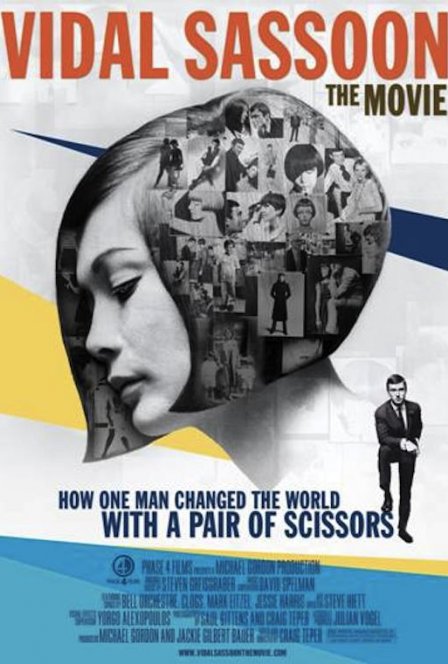The new documentary Vidal Sassoon: How One Man Changed The World With A Pair Of Scissors is true to its lengthy title. It tells the story of the British hairdresser from humble origins whose empire eventually includes the eponymous salons and products for which he is famous. It’s a stylish and fun piece of work, if somewhat of a fanboy film, and the narrative is convincing enough. Although changing the world is a lofty attribution, the film at least shows how Vidal Sassoon left his trademark on fashion and pop culture of the latter 20th century.
More than the sum of its parts, Sassoon’s life has several colorful and historically potent chapters. It begins in post-war London, where poverty and divorce compel Sassoon’s mother to place him in an orphanage. He shares candid and vivid recollections of living through World War II, including the bombing of London. After the war, he leaves school at age 14 and takes a position as an apprentice, thus beginning his fateful career as a hairdresser. He earns his stripes at a fancy ladies salon before opening his own at the age of 27. It takes him about a decade to develop the mod, geometrical cuts that eventually make his name, aiding and abetting Mary Quant in her quest to liberate women via the miniskirt. From there, it is a heady and marvelous trip (with a few dark clouds) from London to New York to Hollywood, where, among other triumphs, he gives Mia Farrow her signature cut in Polanski’s Rosemary’s Baby.
The filmmakers augment extensive interviews with apt archival footage alongside striking titles and graphic sequences. The quasi-animation of photographs with bright colors and lines draws a nice parallel to Sassoon’s admitted interest in architecture. Sassoon, still vibrant and well-spoken in his eighties, is himself a compelling case for the proper exercise and nutrition that he obsesses over. Conspicuously absent, however, is more meaningful probing into his family life. Sassoon is now with his fourth (much younger ) wife, and though his ex-wife and son participate in the documentary, their segments are brief and they speak as if through clenched teeth. But there is no place for unpleasant drama in this homage — the narrative firmly centers on Sassoon as professional and style icon. The resulting film is slight but entertaining, giving life to his infamous slogan: “If you don’t look good, we don’t look good.”

